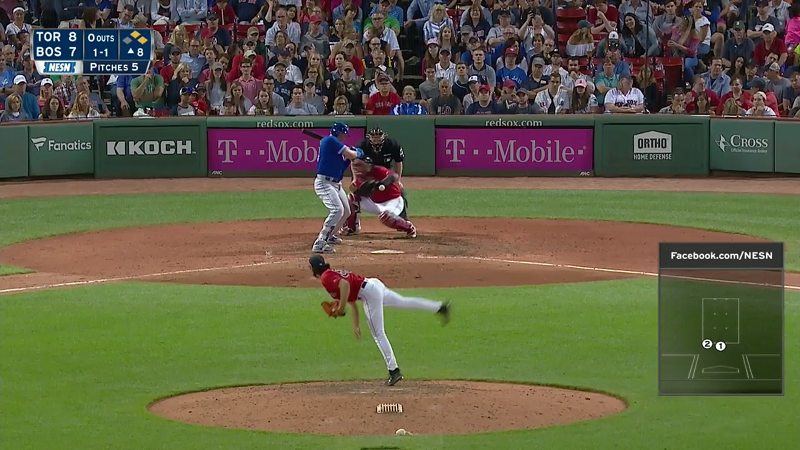CLEVELAND — Jason Benetti is notable in many ways. He’s one of the youngest television play-by-play men in the game at 34. Only Dodgers’ voice Joe Davis (30) is younger. Benetti is one of the few broadcasters to have a law degree (Wake Forest, 2011). He is one of the few (perhaps the only?) play-by-play broadcaster who has MC’d the Saber Seminar in Boston. His credentials suggest he’s open-minded to FanGraphs-style analysis. His age, meanwhile, suggests he might represent the next wave of baseball broadcaster — one, in this case, who is more comfortable with advanced analytics and who sees the game from a new perspective. While Benetti has an appreciation and understanding of new-age numbers, he still considers himself a storyteller first and believes including “humanity” in a broadcast is as important as any metric.
His duties have gradually expanded as he replaces long-time broadcaster Ken “Hawk” Harrelson, who broadcasts only select games, and who will retire at the end of the season. Benetti, a Chicago native and lifelong Sox fan, will tell you he has his dream job, towards which he worked while spending 10 years broadcasting in the minor leagues from independent ball, to Salem, Va. (2007-08), to the Nationals’ Triple-A Syracuse affiliate (2009-14).
For a long time, Benetti balanced law studies with broadcasting in the spring and summer. He intended to have a law career. But the game kept coming back to him, he told me — including his big break when he was hired by the White Sox in 2016. He will tell you, as he told The Chicago Tribune, cerebral palsy is only a small part of who is.
I found Benetti in the White Sox road clubhouse Tuesday, where one can almost always find him before games talking to players, gathering information. In a way, he’s part reporter and part data analyst. He agreed to speak to me about what he feels his responsibility is as a broadcaster, how he prepares, how he balances calling a season for a team in transition, and how he sees the broadcast industry evolving and adapting to modern challenges:
FanGraphs: A reader might spend five or 10 minutes with a piece at FanGraphs or another media outlet (and that’s if they become engaged with it). But if a viewer watches the entirety of a game, you have their ear for three hours. I’d argue there’s no greater influential platform in a local media. Do you see it that way? Do you feel a sense of responsibility?
Jason Benetti: The level of responsibility comes in both fairness and accuracy. We need to be honest about what we are seeing and know what we are seeing is anomalous or not. So I think the tendency is to see a play that happens and is poor and immediately reach for, ‘Oh, you gotta make that play.’ And that’s what fans do and that’s what I did when I was a kid. But I also think there’s a part of it where you have to understand that baseball is such a long year that there are going to be outliers. Michael Jordan missed shots. I’m not saying that Michael Jordan is on the current White Sox. But I am saying that I think responsibility lies in knowing what people’s tendencies are, knowing when they are breaking them, and being as well informed as we possibly can as to what we are seeing fits what we know about that person — or it breaks the mold enough that we need to rethink the person overall.
Read the rest of this entry »


